A Brief History
Discover the ancient origins and fascinating history of tea!
Tea is so much a part of everyday life in Britain that we might never stop to think about how a unique plant from faraway China became the nation´s favourite drink. But the history of tea is fascinating, and in this section we can follow its story from the earliest times in Imperial China right up to its present place at the heart of British life.
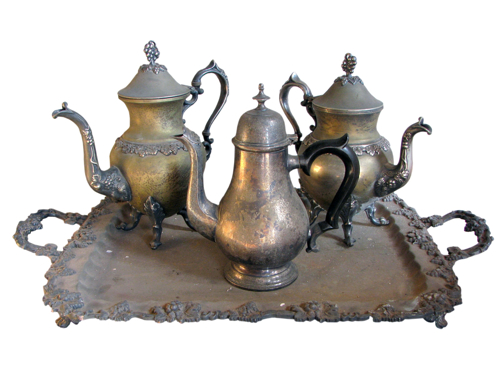
Read about the exotic beginnings of tea in China and the Far East and in time how it was transported to the UK and America on the Tea Clippers.
Discover how tea was brought to England by a seventeenth century queen, and how important the tea trade was to the British East India Company, one of the most powerful commercial organisations the world has ever seen.
Learn how the phenomenal popularity of tea in the eighteenth century led to widespread smuggling and adulteration, and about the murderous lengths smugglers went to to protect their illegal trade.
Read also about the Boston Tea Party of 1773, which sparked off the American Revolution, and how rivalry between the English and the American tea traders in the nineteenth century led to the excitement of the Clipper races. And trace the social history of tea in Britain, from the early debates about its health-giving properties, to the rise of the tea bag, via the great tradition of the London Tea Auction and the role of tea in boosting morale in the World Wars.
This section is an overview of the history of tea in Europe and especially in the United Kingdom.
Tea is often thought of as being a quintessentially British drink, and we have been drinking it for over 350 years. But in fact the history of tea goes much further back.
The story of tea begins in China. According to legend, in 2737 BC, the Chinese emperor Shen Nung was sitting beneath a tree while his servant boiled drinking water, when some leaves from the tree blew into the water. Shen Nung, a renowned herbalist, decided to try the infusion that his servant had accidentally created. The tree was a Camellia sinensis, and the resulting drink was what we now call tea.
tea was first introduced to Japan, by Japanese Buddhist monks
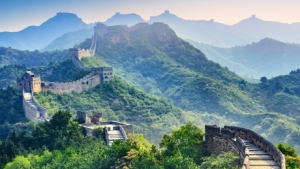
It is impossible to know whether there is any truth in this story. But tea drinking certainly became established in China many centuries before it had even been heard of in the west. Containers for tea have been found in tombs dating from the Han dynasty (206 BC - 220 AD) but it was under the Tang dynasty (618-906 AD), that tea became firmly established as the national drink of China. It became such a favourite that during the late eighth century a writer called Lu Yu wrote the first book entirely about tea, the Ch'a Ching, or Tea Classic. It was shortly after this that tea was first introduced to Japan, by Japanese Buddhist monks who had travelled to China to study. Tea drinking has become a vital part of Japanese culture, as seen in the development of the Tea Ceremony, which may be rooted in the rituals described in the Ch'a Ching.
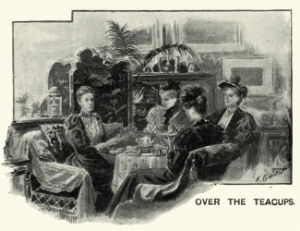 So at this stage in the history of tea, Europe was rather lagging behind. In the latter half of the sixteenth century there are the first brief mentions of tea as a drink among Europeans. These are mostly from Portuguese who were living in the East as traders and missionaries. But although some of these individuals may have brought back samples of tea to their native country, it was not the Portuguese who were the first to ship back tea as a commercial import.This was done by the Dutch, who in the last years of the sixteenth century began to encroach on Portuguese trading routes in the East. By the turn of the century they had established a trading post on the island of Java, and it was via Java that in 1606 the first consignment of tea was shipped from China to Holland. Tea soon became a fashionable drink among the Dutch, and from there spread to other countries in continental western Europe, but because of its high price it remained a drink for the wealthy.
So at this stage in the history of tea, Europe was rather lagging behind. In the latter half of the sixteenth century there are the first brief mentions of tea as a drink among Europeans. These are mostly from Portuguese who were living in the East as traders and missionaries. But although some of these individuals may have brought back samples of tea to their native country, it was not the Portuguese who were the first to ship back tea as a commercial import.This was done by the Dutch, who in the last years of the sixteenth century began to encroach on Portuguese trading routes in the East. By the turn of the century they had established a trading post on the island of Java, and it was via Java that in 1606 the first consignment of tea was shipped from China to Holland. Tea soon became a fashionable drink among the Dutch, and from there spread to other countries in continental western Europe, but because of its high price it remained a drink for the wealthy.
Britain, always a little suspicious of continental trends, had yet to become the nation of tea drinkers that it is today.Since 1600, the British East India Company had a monopoly on importing goods from outside Europe, and it is likely that sailors on these ships brought tea home as gifts. But the first dated reference to tea in this country is from an advert in a London newspaper, Mercurius Politicus, from September 1658. 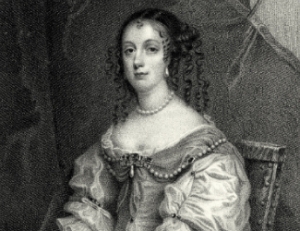 It announced that 'China Drink, called by the Chinese, Tcha, by other Nations Tay alias Tee' was on sale at a coffee house in Sweeting's Rents in the City. The first coffee house had been established in London in 1652, and the terms of this advert suggest that tea was still somewhat unfamiliar to most readers, so it is fair to assume that the drink was still something of a curiosity.
It announced that 'China Drink, called by the Chinese, Tcha, by other Nations Tay alias Tee' was on sale at a coffee house in Sweeting's Rents in the City. The first coffee house had been established in London in 1652, and the terms of this advert suggest that tea was still somewhat unfamiliar to most readers, so it is fair to assume that the drink was still something of a curiosity.
a Portuguese princess, and a tea addict
It was the marriage of Charles II to Catherine of Braganza that would prove to be a turning point in the history of tea in Britain. She was a Portuguese princess, and a tea addict, and it was her love of the drink that established tea as a fashionable beverage first at court, and then among the wealthy classes as a whole. Capitalising on this, the East India Company began to import tea into Britain, its first order being placed in 1664 - for 100lbs of China tea to be shipped from Java.
The British took to tea with an enthusiasm that continues to the present day. It became a popular drink in coffee houses, which were as much locations for the transaction of business as they were for relaxation or pleasure. They were though the preserve of middle- and upper-class men; women drank tea in their own homes, and as yet tea was still too expensive to be widespread among the working classes. In part, its high price was due to a punitive system of taxation. The first tax on tea in the leaf, introduced in 1689, was so high at 25p in the pound that it almost stopped sales. It was reduced to 5p in the pound in 1692, and from then until as recently as 1964, when tea duties were finally abolished, politicians were forever tinkering with the exact rate and method of the taxation of tea.
sheep's dung was added to make it look more like tea.
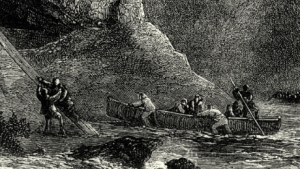 One unforeseen consequence of the taxation of tea was the growth of methods to avoid taxation - smuggling and adulteration. By the eighteenth century many Britons wanted to drink tea but could not afford the high prices, and their enthusiasm for the drink was matched by the enthusiasm of criminal gangs to smuggle it in.Their methods could be brutal, but they were supported by the millions of British tea drinkers who would not have otherwise been able to afford their favourite beverage. What began as a small time illegal trade, selling a few pounds of tea to personal contacts, developed by the late eighteenth century into an astonishing organised crime network, perhaps importing as much as 7 million lbs annually, compared to a legal import of 5 million lbs! Worse for the drinkers was that taxation also encouraged the adulteration of tea, particularly of smuggled tea which was not quality controlled through customs and excise. Leaves from other plants, or leaves which had already been brewed and then dried, were added to tea leaves. Sometimes the resulting colour was not convincing enough, so anything from sheep's dung to poisonous copper carbonate was added to make it look more like tea.
One unforeseen consequence of the taxation of tea was the growth of methods to avoid taxation - smuggling and adulteration. By the eighteenth century many Britons wanted to drink tea but could not afford the high prices, and their enthusiasm for the drink was matched by the enthusiasm of criminal gangs to smuggle it in.Their methods could be brutal, but they were supported by the millions of British tea drinkers who would not have otherwise been able to afford their favourite beverage. What began as a small time illegal trade, selling a few pounds of tea to personal contacts, developed by the late eighteenth century into an astonishing organised crime network, perhaps importing as much as 7 million lbs annually, compared to a legal import of 5 million lbs! Worse for the drinkers was that taxation also encouraged the adulteration of tea, particularly of smuggled tea which was not quality controlled through customs and excise. Leaves from other plants, or leaves which had already been brewed and then dried, were added to tea leaves. Sometimes the resulting colour was not convincing enough, so anything from sheep's dung to poisonous copper carbonate was added to make it look more like tea.
By 1784, the government realised that enough was enough, and that heavy taxation was creating more problems than it was worth. The new Prime Minister, William Pitt the Younger, slashed the tax from 119 per cent to 12.5 per cent. Suddenly legal tea was affordable, and smuggling stopped virtually overnight.
As well as the great debate in the eighteenth century about the taxation of tea, there was an equally furious argument about whether tea drinking was good or bad for the health. Leaps forward in medical and scientific research mean that we now know that drinking four cups of tea a day may help maintain your health, but such information was not available to tea drinkers 250 years ago. Wealthy philanthropists in particular worried that excessive tea drinking among the working classes would lead to weakness and melancholy. Typically, they were not concerned with the continuing popularity of tea among the wealthy classes, for whom 'strength to labour' was of rather less importance! The debate rumbled on into the nineteenth century, but was really put to an end in the middle of that century, when a new generation of wealthy philanthropists realised the value of tea drinking to the temperance movement. In their enthusiasm to have the working classes go teetotal, tea was regularly offered at temperance meetings as a substitute for alcohol.
Another great impetus to tea drinking resulted from the end of the East India Company's monopoly on trade with China, in 1834. Before that date, China was the country of origin of the vast majority of the tea imported to Britain, but the end of its monopoly stimulated the East India Company to consider growing tea in India. India had always been the centre of the Company's operations, where it also played a leading role in the government. This led to the increased cultivation of tea in India, beginning in Assam. There were a few false starts, including the destruction by cattle of one of the earliest tea nurseries, but by 1839 there was sufficient cultivation of tea of 'marketable quality' for the first auction of Assam tea in Britain. In 1858 the British government took over direct control of India from the East India Company, but the new administration was equally keen to promote the tea industry and cultivation increased and spread to regions beyond Assam. It was a great success, production was expanded, and by 1888 British tea imports from India were for the first time greater than those from China.
the era of the Tea Clippers
The end of the East India Company's monopoly on trade with China also had another result, which was more dramatic though less important in the long term: it ushered in the era of the tea clippers. While the Company had had the monopoly on trade, there was no rush to bring the tea from China to Britain, but after 1834 the 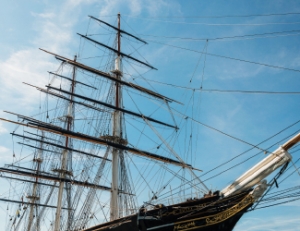 tea trade became a virtual free for all. Individual merchants and sea captains with their own ships raced to bring home the tea and make the most money, using fast new clippers which had sleek lines, tall masts and huge sails. In particular there was competition between British and American merchants, leading to the famous clipper races of the 1860s. The race began in China where the clippers would leave the Canton River, race down the China Sea, across the Indian Ocean, around the Cape of Good Hope, up the Atlantic, past the Azores and into the English Channel. The clippers would then be towed up the River Thames by tugs and the race would be won by the first ship to hurl ashore its cargo at the docks. But these races soon came to an end with the opening of the Suez canal, which made the trade routes to China viable for steamships for the first time.
tea trade became a virtual free for all. Individual merchants and sea captains with their own ships raced to bring home the tea and make the most money, using fast new clippers which had sleek lines, tall masts and huge sails. In particular there was competition between British and American merchants, leading to the famous clipper races of the 1860s. The race began in China where the clippers would leave the Canton River, race down the China Sea, across the Indian Ocean, around the Cape of Good Hope, up the Atlantic, past the Azores and into the English Channel. The clippers would then be towed up the River Thames by tugs and the race would be won by the first ship to hurl ashore its cargo at the docks. But these races soon came to an end with the opening of the Suez canal, which made the trade routes to China viable for steamships for the first time.
tea had become firmly established as part of the British way of life
In 1851, when virtually all tea in Britain had come from China, annual consumption per head was less than 2lbs. Bt 1901, fuelled by cheaper imports from India and Sri Lanka (then called Ceylon), another British colony, this had rocketed to over 6lbs per head. Tea had become firmly established as part of the British way of life. This was officially recognised during the First World War, when the government took over the importation of tea to Britain in order to ensure that this essential morale-boosting beverage continued to be available at an affordable price. The government took control again during the Second World War, and tea was rationed from 1940 until 1952. 1952 also saw the re-establishment of the London Tea Auction, a regular auction that had been taking place since 1706. The auction was at the centre of the world's tea industry, but improved worldwide communications and the growth of auctions in tea producing nations meant that it gradually declined in importance during the latter half of the twentieth century. The final London Tea Auction was held on 29 June 1998.
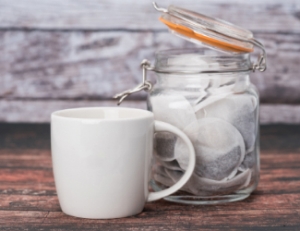 But as the tea auction declined, an essential element of modern tea-drinking took off - the tea bag. Tea bags were invented in America in the early twentieth century, but sales only really took off in Britain in the 1970s. Nowadays it would be hard for many tea-drinkers to imagine life without them. Such is the British enthusiasm for tea that even after the dismantling of the Empire, British companies continue to play a leading role in the world's tea trade and British brands dominate the world market. With recent scientific research indicating that tea drinking may have direct health benefits, it is assured that for centuries to come there will be a place at the centre of British life for a nice cup of tea.
But as the tea auction declined, an essential element of modern tea-drinking took off - the tea bag. Tea bags were invented in America in the early twentieth century, but sales only really took off in Britain in the 1970s. Nowadays it would be hard for many tea-drinkers to imagine life without them. Such is the British enthusiasm for tea that even after the dismantling of the Empire, British companies continue to play a leading role in the world's tea trade and British brands dominate the world market. With recent scientific research indicating that tea drinking may have direct health benefits, it is assured that for centuries to come there will be a place at the centre of British life for a nice cup of tea.